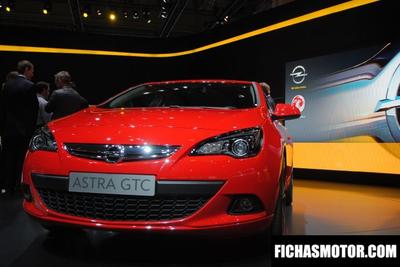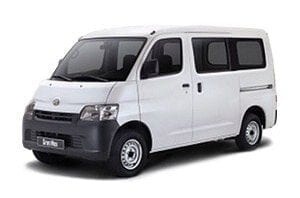
Opel Astra 1.4 Turbo ECOTEC Start / Stop Innovation
This is mainly due to the good design work of Opel engineers, in which we have already lost confidence that something great can happen to them. In the meantime, Mokka appeared, which also convinced many buyers. The Astra is facing a tough challenge as it has plenty of lower-middle-class competitors.
But because it's new, better, lighter, more comfortable, roomier, more useful and more comfortable in almost every way, Opel dealers are now relieved. In last year's Auto magazine we tested the turbodiesel version in a big test. Likewise, the 150 "horsepower" gasoline engine has a new engine with less weight. Opel has unveiled a new turbocharged four-cylinder petrol engine specifically for the Astro, which is an enlarged cousin of three-cylinder petrol with a cylinder that is pushed to the fore for a number of reasons. But those who appreciate more displacement and slightly higher performance will not be able to pass the Astra we tested!
The performance is impressive and at the same time it behaves very modern in terms of fuel consumption. We can say that even the sailors managed to declare: less is better. When we write less, we only mean the 1,4-liter engine, when we talk about the larger one, there is both maximum power (already mentioned 150 "horsepower") and convincing torque at low revs (245 Newton meters in the rev range. between brands 2.000 and 3.500). This is an engine with modern attachments, a cast iron block with central and direct fuel injection and a turbocharger. It was convincing in performance and slightly less economical, but only taking into account the factory data on the average fuel consumption in the standard cycle (4,9 liters per 100 km).
We were unable to complete the task to come close to this average in our circle of norms. We lacked a full 1,7 liters for the brand, but the Astra's result in our test still seems quite convincing. It is also interesting to note how much the speedometer "lied", similar to the turbodiesel version from our first test. As for you, Opel is particularly concerned that radar measurements will still remain within the range of impunity, as the turbocharged petrol Astra has “passed” just under ten kilometers per hour at top speed on our motorways. The Slovenian and European car of 2016 is, of course, already so well known that there is nothing to lose about its shape. Judging by the reviews of ordinary passers-by on the roads (which are not there), the design of the Astra is quite unobtrusive, or, better to say: it well continues the design direction, which was also developed by the first Opel designer, Mark Adams. Several changes can be seen in the interior. Comfortable seats are definitely worth mentioning, although those that Opel prioritize in the German Healthy Spine Movement (AGR) come at a price.
However, the cartridge returns quickly. There is also plenty of room for rear passengers, but of course, cars in this class are not the wonder of spaciousness, like the Astra. This is especially noticeable in the trunk. Otherwise, a sufficiently long one seems too deep (only 70 centimeters from the bottom to the lid under the glass of the rear door), since the bottom of the trunk is high enough, and it is impossible to store many small items under it. On the contrary, some competitors find it easier to use the luggage compartment. The usability of the newly designed touchscreen interior in the center of the dash (commendable, at the same height as the gauges) is definitely better than the previous one. The designers also put in an effort and shaped the edge next to the screen accordingly, where we can place our palm and thus find the icon or place where we want to press with the pad of our finger. But for a driver who hasn't spent a lot of time (an hour or more), it is difficult at first to find all the settings. We were concerned about the tire pressure warning light. We couldn't turn it off even after we double checked the tire pressure! In many cases, the solution is to get it repaired, as the system that works with the four sensors in the tires needs to be restarted (which means a limited time window for repair options or whatever, like ignoring the warning light).
Such a system is also not exactly economical on the owner's wallet, as you are charged for restoring pressure control. Smartphone connectivity works well and easily, but unfortunately Opel's OnStar system doesn't work with us yet, and in a sense the Astra is still halfway "off" when it comes to the usability of highly acclaimed vehicle-to-environment connectivity solutions. environment. However, the good feeling when driving at night is commendable: the LED headlights provide much better visibility and also respond well to the current road conditions in front of us (such as headlight dimming in oncoming traffic). They are available as an option in a package along with a navigation device (IntelliLink Navi 900) and a three-spoke leather steering wheel.
It's not exactly cheap with this peg, and the price list teaches us that you can pay €350 less just for the headlights, so after all, sailboats don't require an excessive surcharge. In general, the price of our test Astra is the part where it will be difficult to find a majority agreement, but it still seems that for not such a small amount, the buyer gets quite a lot of car. This is mainly due to the fact that the equipped version of Innovation (the second most complete and, of course, the most expensive) does have a number of useful accessories.
Tomaž Porekar, photo: Saša Kapetanovič
Opel Astra 1.4 Turbo ECOTEC Start / Stop Innovation
Basic data
| Base model price: | 19.600 € |
|---|---|
| Test model cost: | 22.523 € |
| Power: | 110kW (150 KM) |
Costs (per year)
Technical information
| engine: | 4-cylinder - 4-stroke - in-line - turbocharged petrol - displacement 1.399 cm3 - maximum power 110 kW (150 hp) at 5.000 - 5.600 rpm - maximum torque 230 Nm at 2.000 - 4.000 rpm . |
|---|---|
| Energy transfer: | front wheel drive engine - 6-speed manual transmission - tires 225/45 R 17 V (Michelin Alpin 5). |
| Capacity: | top speed 215 km/h - 0-100 km/h acceleration 8,9 s - average combined fuel consumption (ECE) 5,1 l/100 km, CO2 emissions 117 g/km. |
| Mass: | empty vehicle 1.278 kg - permissible gross weight 1.815 kg. |
| External dimensions: | length 4.370 mm - width 1.809 mm - height 1.485 mm - wheelbase 2.662 mm |
| Inner dimensions: | trunk 370–1.210 l – 48 l fuel tank. |
Our measurements
| Measurement conditions: T = 4 ° C / p = 1.028 mbar / rel. vl. = 65% / odometer status: 2.537 km | |
| Acceleration 0-100km: | 8,6s |
|---|---|
| 402m from the city: | 16,2 years ( 141 km / h) |
| Flexibility 50-90km / h: | 6,9 with (IV) |
| Flexibility 80-120km / h: | 8,7s (V) |
| test consumption: | 7,8 l / 100km |
| Fuel consumption according to the standard scheme: | 6,6 l / 100km |
| Braking distance at 100 km / h: | 40,1m |
| AM table: | 40m |
| Noise at 90 km / h in 6rd gear | 61dB |
evaluation
The Opel Astra promises new technologies at an affordable price, which is good news. Also, because with a powerful petrol turbo engine, it is quite a convincing and pleasant car.
We praise and reproach
comfort
open space
position on the road
quality impression
price (due to a powerful engine and rich equipment)
poor picture from the rear view camera
sit on the front seats
smaller trunk
time-consuming search and setting of functions in a combination of menus (various information on the screens in the meters and on the center console)
poor resolution of car radios
price (compared to some competitors)

